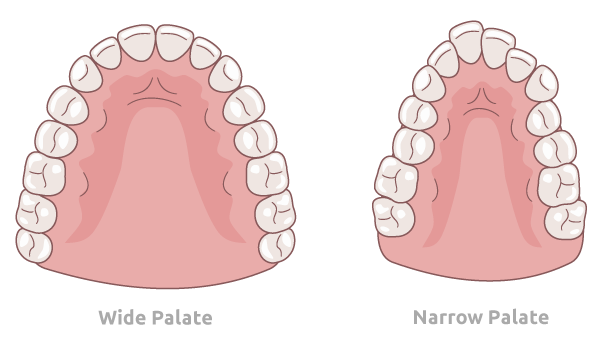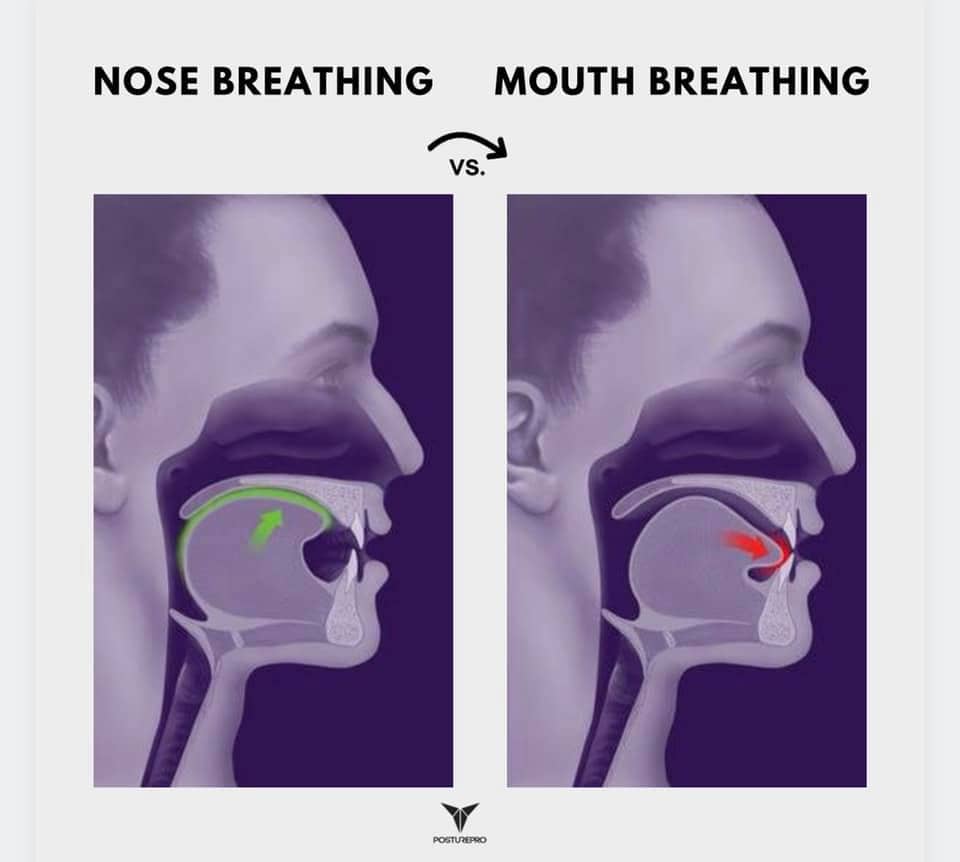From quiet snorts to loud gasps that sound like a jet plane, the majority of adults snore.
An estimated 25 percent of adults snore on a regular basis, disrupting their sleep as well as their partner’s.
Just because snoring is commonplace doesn’t mean it’s normal. Snoring may be a sign of a more serious sleep disorder where multiple lapses in breathing occur overnight.
Sleep-disordered breathing refers to the large spectrum of breathing disorders many people experience overnight, including obstructive sleep apnea (OSA).
What’s caused this sleep-disordered breathing epidemic? Ancient skulls give us some insight.
Compared to modern skulls, ancient skulls contained a much less narrow palate, giving humans more room for airway muscles and, in turn, more efficient oxygenation.
Narrow Palates and Mouth Breathing
Sleep apnea affects as many as 25 million Americans alone.
Obstructive sleep apnea is linked to an increased risk of heart attacks, heart failure, strokes, and (in severe cases) death.
A largely attributed cause to this sleep-disordered breathing epidemic? Underdeveloped airway muscles and narrowing palates.
The book "Jaws: The Story of A Hidden Epidemic" delves into how our jaws are changing – and it’s not for the better.
Evolutionarily, our jaws and palates are shrinking, leaving less room for the tongue and teeth. As a result, crooked and crowded teeth and breathing difficulties have become the norm.
In contrast, ancient skulls were wide, with plenty of space for the teeth and tongue. This led to fewer oral health problems and easy breathing.
Due to narrow palates, we’ve defaulted to breathing through our mouths instead of our noses.
This worsens nasal congestion, leads to over-breathing and poor oxygenation, and only furthers our risk for snoring, sleep-disordered breathing, and sleep apnea.
@somnifix Neuroscientist #AndrewHuberman explains why #nasalbreathing is superior to #mouthbreathing 🧪 #neuroscience #biohack #learntok ♬ original sound - Somnifix
Check in with your breathing. If you aren’t inhaling and exhaling through your nose, you may want to pay closer attention to your airway health.
James Nestor further delves into the epidemic of shrinking jaws and the health problems associated with mouth breathing in his book "Breath: The New Science of a Lost Art."
In the book, Nestor lays out the benefits of nasal breathing, which warms, filters, pressurizes, and humidifies the air we breathe. As a result, the lungs can extract oxygen taken in from the nose much more efficiently than the mouth.
Mouth breathing also further shrinks our palates, worsening the skeletal structure changes causing us to mouth breathe in the first place.
Nestor showcases the dangers of mouth breathing over a 20-day experiment in which Anders Olsson, a Swedish breathing therapist, manually plugged his nose up, leaving mouth breathing as his only means of airway exchange.
Over the course of the experiment, Nestor went from snoring just a couple of minutes per night to snoring for hours at night while mouth breathing.
He developed sleep apnea, extremely high stress levels, and reported feeling extremely fatigued. His athletic performance dwindled.
Once Nestor was able to remove the plugs from his nose and breathe normally again, his snoring and sleep apnea disappeared while his mood, energy levels, and performance returned to normal.
This isn’t new news.
The importance of breathing has been at the forefront of ancient cultures for hundreds of years. Somewhere along the way, we lost our appreciation for the art of nasal breathing.
The Lost Art of Nasal Breathing
In modern times, we know that nasal breathing produces nitric oxide, a vasodilator known to take us out of fight or flight by activating the parasympathetic nervous system, or our “rest and digest” response.
Ancient cultures were ahead of the airway health game. Our ancestors knew that calm, steady breathing was key to improved mental and physical health.
According to Nestor, people have been talking about the importance of breathing patterns for hundreds of years.
Ancient Hindu text often mentions breathing, while eight books of the Chinese Dao are solely focused on the significance of breathing.
Somewhere along the way, humans lost touch with the art of breathing through our noses.
In a 2021 interview with CBC News, Nestor mentioned that he visited the catacombs in Paris on the recommendation of biological anthropologists to visually inspect ancient human skulls.

He found that as our breathing patterns worsened, a visually noticeable change began to occur within our skeletal structure.
"This is the first time that our species has ever suffered from chronically crooked teeth in the last 100 years," he said.
So we know that our skeletal structure has changed over time, causing dental crowding, shrinking airways, sleep apnea, and even asthma and allergies.
But what has caused this growth pattern to change in the first place? Many believe that our modern industrialized diet is to blame.
Our Modern Diet is Shrinking Our Faces!
Here’s a fun fact: cavemen didn’t need braces.
We’ve only developed the need for common orthodontic intervention within the last 250 to 300 years.
Skeletal remains from just 300 years ago prove that humans used to have very straight, well-aligned teeth, wide jaws, and large nasal passages for habitual nasal breathing.
Most current evidence connects the changing of our jaws and narrow palates to industrialization.
We don’t hunt or gather our food anymore. Instead, we eat a very soft diet chock-full of processed foods that require far less chewing.
Think about it: our ancestors had to hunt down their own protein sources. Once ready to eat, thorough chewing was required.
In contrast, we can now obtain the same amount of protein by simply chugging a protein shake.
As our jaws began to do less work, they began to shrink. Jaws, like any muscle, have to be put to use to remain strong.
While our jaws weakened over time, our tongue posture began to change.
Just like your standing posture, your oral posture is important. Proper tongue posture includes sealed lips, slightly parted teeth, and a tongue suction that causes your tongue to touch the roof of your mouth at the tip, middle, and back just behind the front teeth.
This posture promotes nasal breathing, prevents neck strain, and keeps our jaws in the proper resting position.
When your palate is narrow, there’s less space for your tongue to sit in this posture due to teeth crowding.
That means our mouths are more likely to fall open, causing us to breathe in non-filtered air, pathogens, and bacteria. This leads to illness, allergies, and nasal congestion, which causes even more mouth breathing.

It’s a vicious cycle to break, but chewing hearty foods like solid meats, vegetables, or fruits over soft, processed ones is a great place to start.
Proper breathing and swallowing patterns allow us to begin making the switch from habitual mouth breathing to habitual nasal breathing – the breathing method we were designed to use.
Mouth Breathing Treatment 101
As we’ve mentioned, chronic overnight mouth breathing is linked to snoring and sleep apnea.
Sleep-disordered breathing is caused by a narrow palate, poor tongue posture, and poor breathing habits.
So how do you break the habit and begin correcting the issue? Switching from mouth breathing to nasal breathing during the day begins with one step: mindfulness.
Set several alarms throughout the day to take a break and check in with your breath and tongue posture. Is your mouth open? Is your tongue against the roof of your mouth where it should be, or down at the bottom of your mouth?
Awareness is key to initiating change. By becoming aware of your current breathing habits, you can start to make the shift toward nasal breathing.
If you’re chronically congested, try Buteyko breathing exercises to decongest. Do nasal breathing exercises while on a walk or during each break you take during your work day.
Still finding it difficult to nasal breathe? Consider myofunctional therapy to help train your jaw and airway muscles or rule out a deviated septum or tongue tie that may be causing extra difficulty when it comes to breathing in and out of your nose.
Finally, prevent mouth breathing during sleep to ensure better quality rest free from snoring.
Prevent Overnight Mouth Breathing and Snoring
Switching from mouth breathing to nasal breathing during the day is fairly straightforward. But what about at night while you’re asleep?
It sounds unusual, but mouth taping provides a quick, simple solution to prevent disordered breathing as you rest.
By using mouth tape at night, you’ll prevent snoring and open-mouth breathing as you sleep, ensuring that you’ll breathe efficiently filtered and conditioned air for better oxygenation and sleep quality.
There’s just one caveat: you shouldn’t tape your mouth if you have sleep apnea unless you’re sticking to your regularly prescribed CPAP therapy.
Moreover, be sure that your sleep specialist or doctor approves of adding mouth tape to the mix. It can prevent mask leaks and even replace cumbersome chin straps, in some circumstances.

Don’t just settle on the tape you have lying around your home. This tape contains irritating chemicals that cause skin irritation and rashes.
SomniFix, however, was specially designed for even the most skin types. Our strips are hypoallergenic and don’t contain latex or gluten.
Our patented central breathing vent helps ease you into the sensation of mouth taping, while our gel-like adhesive provides a fit so comfortable, you’ll forget you’re wearing mouth tape at all.
As you work to widen your narrow palate, SomniFix offers a non-invasive, simple, comfortable mouth breathing treatment for your highest quality sleep and breathing yet!







